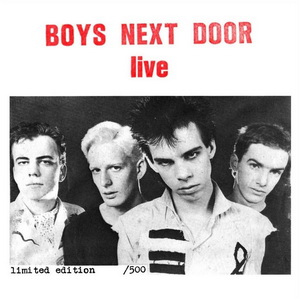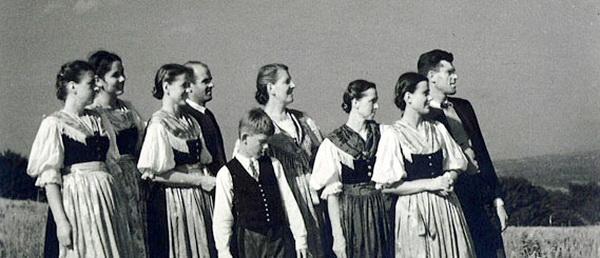Any Major ABBA covers

ABBA are introduced in a pre-performance segment at the 1974 Eurovision Song Contest. Viewers had no idea what outlandish costumes would greet them when ABBA took the stage.
On 6 April it will be 40 years since ABBA won the Eurovision Song Contest in Brighton, England, with “Waterloo”. It was a strange choice of vehicle by which to shoot for international stardom. The Eurovision Song Contest was notorious for its dull offerings of sentimental easy listening ballads, absurd pop fodder and idiosyncratic national folk pop — which, at its rare best, nevertheless produced such timeless classics as “Volare”, placing third in 1958.
Of course, intermittently the contest revealed a gem, such as Sandie Shaw’s “Puppet On A String” (which she despised), Katja Ebstein’s “Wunder gibt es simmer wieder” or, arguably, France Gall’s “Poupée de cire, poupée de son”. And even among the easy listen ballads there’d be rare gold, such as Vicky Leandros’ pair of international hits, “L’amour est bleu” (covered by Paul Mariat as “Love Is Blue”) and “Apres toi”, a UK hit as “Come What May”.
Still, when ABBA appeared in their gaudy outfits to play their glam pop number — conducted by a man, the late Sven-Olof Walldoff, dressed as Napoleon instead of the obligatory tux with bowtie — it was quite unprecedented. That might explain why most national juries didn’t give that year’s best song by far, and I have watched the thing, top marks. This wasn’t in the spirit of the Eurovision. Britain was among the five countries to give ABBA “nil points”. Which was fair enough, since Sweden gave no points to the British entry, one of the favourites, the moderately rousing and religiously vibed “Long Live Love” by Olivia Newton-John, which ended up in fourth place.

ABBA react to not getting any points from the Greek jury in round five of scoring. Belgium’s not very good entry got five points from Greece. ABBA was one point behind Italy at the time.
1974’s Eurovision had a strange point-scoring system: national juries comprised ten members — five music insiders and five music-loving fans of all age groups — who each would award a point to their favourite performance. The highest aggregate bestowed by a jury that year was five points, awarded four times, and twice to “Waterloo”, by Finland and Switzerland. Until the 14th of 17 rounds, the Italian entry — an all-over the-shop ballad sung by Gigliola Cinquetti titled “Si” — narrowly led the Swedish entry. Germany’s two points and the Swiss fiver turned it for ABBA, who ended up winning by a healthy six points.
ABBA, as we know, became phenomenally successful, and then, in fairly short order, reviled. I loved them, but when I was 12 or 13 — the age of “Summer Night City” and the repulsive “I Have A Dream” — I didn’t anymore. At that age I would reject acts for being aimed at people of my own age group, people like Leif Garrett. But with ABBA it was their visible progression to middle age that caused my rejection of them. It wasn’t that “Summer Night City” itself offended me, though I was, and remain, indifferent to it. It was, to put it symbolically, that Agnetha, my first pop crush, started to dress like my mother. Now, my mother was a very attractive, young woman in her mid-thirties (only a year older than Anni-Frid), who wore tasteful clothes which complemented her sporty figure, and she generally was pretty hip. But I certainly didn’t want to see Mom in my pop music.
I was not alone in falling off Planet ABBA. The backlash to the most successful group of the 1970s was vicious. For a long time ABBA were regarded as naff, commercial, corporate, even as lacking in artistic credibility. They might have been a “guilty pleasure”, but not meriting of much admiration — at least outside the gay scene. To my shame, I was not reawakened to their genius until the mid-‘90s when ABBA’s rehabilitation was in full swing.
Much has been made of their genius since then, by people who are much better qualified than I am to explain it. But one thing I do pretend to know a few of things about is cover versions. And it is remarkable how few cover versions of ABBA songs there are, never mind good ones. The big ABBA hits are very great songs, to be sure. But their lifeblood is not the melody, but Benny and Björn’s arrangements and the place of Agnetha’s and Annifrid’s voices in these arrangements. Without these elements, ABBA songs are difficult to pull off.
This mix illustrates the point. Mostly it is pointless to make a straight copy of ABBA songs, unless you do the early numbers in glam rock style, as Dr & the Medics do here with the help of glam legend Roy Wood, or are able to capture the pop essence, as Kylie Minogue does in her live performance or as Sweet Dreams do in one of the earliest covers of an ABBA song. Failing the glam or pop option, the songs require reinterpretation — and that isn’t easy when you have to work with those lyrics!
Nils Landgren turns “The Name Of The Game” into an acid jazz jam, and Richard Thompson gives “Money Money Money” an unironic folk treatment, as does Evan Dando with “Knowing Me, Knowing You”. Yngwie Malmsteen denudes “Gimme Gimme Gimme” of its disco camp and renders it hair-rock style. Max Raabe does such strange things to “Super Trouper” that one wonders whether he likes the song or utterly despises it. And Mike Oldfield takes a song that sounded like a Mike Oldfield song in the first place, and turns it into a Mike Oldfield song.
 As always, the mix is timed to fit on a standard CD-R and includes flat-pack home-assembled covers. PW in comments.
As always, the mix is timed to fit on a standard CD-R and includes flat-pack home-assembled covers. PW in comments.
1. Doctor & The Medics with Roy Wood – Waterloo (1992)
2. Sweet Dreams – Honey Honey (1974)
3. Kylie Minogue – Dancing Queen (1998)
4. Nils Landgren – Name Of The Game (2004)
5. Go West – One Of Us (1993)
6. Blancmange – The Day Before You Came (1984)
7. Mike Oldfield – Arrival (1980)
8. Sinéad O’Connor – Chiquitita (2003)
9. Evan Dando – Knowing Me, Knowing You (1999)
10. Richard Thompson – Money (2003)
11. Nashville Train – Hasta Mañana (1977)
12. Black Sweden – The Winner Takes It All (2001)
13. Yngwie Malmsteen – Gimme! Gimme! Gimme! (1999)
14. Ash – Does Your Mother Know? (1996)
15. Lush – Hey Hey Helen (1990)
16. Culture Club – Voulez Vous (1999)
17. Erasure – Lay All Your Love On Me (1990)
18. Men Without Hats – S.O.S. (1989)
19. Palast Orchester Mit Seinem Sänger Max Raabe – Super Trouper (2005)
20. Carpenters – Thank You For The Music (1978)
* * *













Recent Comments